Hawthorn – The Illusionist
May 13 – June 9
Hawthorn signs in Celtic tree astrology are not at all what they appear to be. Outwardly, they appear to be a certain persona, while on the inside Hawthorn’s are quite different. They put the term “never judge a book by its cover” to the test. They live seemingly average lives while on the inside they carry fiery passions and inexhaustiblecreative flame. They are well adjusted and can adapt to most life situations well – making themselves content and comforting others at the same time. You are naturally curious, and have an interest in a broad range of topics. You are an excellent listener, and people seek you out as an outlet to release their burdens. You have a healthy sense of humor, and have a clear understanding of irony. You tend to see the big picture, and have amazing insight – although you typically won’t give yourself enough credit for your observations. Hawthorn signs match up nicely with Ash and Rowan’s.
Owl (Ogham = The Hawthorn)
When the owl screeches out to your consciousness, it’s a safe bet. Owls have enchanted both ancient Celts and modern humankind alike. I often wonder if myth delegated the watchful owl to the realm of underworlds because the owl is so mysterious and cannot be defined – just like the underworld. Admittedly, the owl has some unusual mannerisms and behaviors. But, to be sure, she is a magnificent creature with vast attributes for our consideration. To wit, consider her hunting ability. Owls know how to get what they want (and often do so using curious methods). When the owl brushes your thoughts, begin to consider ways to get what you want, but not by using linear methods. Claw out of the usual, and fly into more unusual methods to accomplish your goals.
Seahorse
May 13 – June 9
The Celtic animal sign of seahorse is vastly flexible and resourceful. The seahorse is the person you want managing your finances or handling your legal matters because these people are infinitely clever (if there’s a loophole, they’ve either found it or invented it). They also have amazing memory retention. They are sometimes hard to follow because they’re minds are so sharp. They can also be changeable, but they always come back around to a level of high charisma. These people are astoundingly versatile and adapt remarkably well in any environment. Seahorses are so loveable too. Even better, they love being adored, and easily reciprocate affection.
Sensational Symbolic Meaning of the Seahorse
Lots of cultures consider the seahorse to be extremely magical and lucky. Much of this has to do with the unique symbolic meaning of the seahorse. It has an odd way of living, and let’s face it – these creatures are kinda funky looking too. This article explores more about the special symbolism of the seahorse.
The symbolic meaning of seahorse is quite intricate and diverse as this little creature itself is full of surprises.
The seahorse is quite a unique creature, and thought to have mystical significance among the Ancient Greeks, European (alchemists) and Asians.
The Ancient Greeks and Romans believed the seahorse was an attribute of the sea god Neptune/Poseidon and as such, the seahorse was considered a symbol of strength and power.
Furthermore, the ancient Eurpeans believed that the seahorse carried the souls of deceased sailors to the underworld – giving them safe passage and protection until they met their soul’s destination.
Chinese cultures believed that the seahorse was a type of sea dragon, and as such they were revered for their power and thought to be symbols of good luck.
Sailors have long viewed the seahorse as a good luck charm too.
Symbolic meaning of Seahorses carry the following significances…
Symbolic Seahorse Meaning
- Patience
- Protection
- Perspective
- Inflexibility
- Persistence
- Friendliness
- Contentment
- High-Perception
- Generosity/Sharing
A relatively calm, and mild-mannered creature, the seahorse is seemingly content to roam the seas. Their bodies are geared for ambling-type motion – not for speed. Thus, they are symbolic of patience and contentment – they are happy with being where they are, and are in no hurry for advancement.
Further testimony to these attributes is the lack of evolution of the seahorse’s body style. They have remained with this body style without change since their inception.Content to be who they are, and not feeling the need to change – these are a few profound lessons the seahorse provides us.
However, along with a resistence to change, and a carefree approach to progress, the seahorse can be a symbol of inflexibilty or stubborness. To wit, the seahorse wraps its tail around the nearest object in order to anchor itself in turbulent waters. This is a lesson to be persistent in our goals, but be mindful that we are not too inflexible or stubborn in our achieving them.

A unique aspect of the seahorse is that the male is impregnated by the female and carries the offspring to term. This is a message of sharing the load in the home, and gaining perspective of both sides (genders) of an argument or situation.
The seahorse has a boney exoskeleton which is a message of protection. Often when the seahorse comes to us it is a sign that we either need protection from our external circumstances, or we are building walls that aren’t needed. Their armor-bodies are a sign that sometimes we might need to let our guard down – or perhaps we are leaving ourselves too open to get hurt.
Lastly among the long list of symbolic meaning of the seahorse and its lessons is the idea of perception. The eyesight of the seahorse is incredibly sharp, and each eye moves independently. We take this as a symbolic message of perception and awareness of those around us and our situations. When we are lost or confused, the seahorse asks us to take a good look around – not just with our physical eyes but with our spiritual eyes in order to get a better persepective of the situations.
Personality Introduction for This Celtic Animal Sign:
Greetings dear Seahorse! Where do I begin with you? There is, perhaps no other creature on earth outside the seahorse that can capture your uniqueness.
Greetings dear Seahorse! Where do I begin with you? There is, perhaps no other creature on earth outside the seahorse that can capture your uniqueness.
In fact, you are so versatile and diverse, it’s a challenge to know where to start. Physically, mentally and emotionally – you are one of a kind.
Let’s start with one of your most evident aspects: Duality. I know for some of you seahorses this is a prickly subject. It can sometimes be a challenge for you to strike a balance. That’s understandable. Often, you are of two minds about any one subject. You can spout a thousand different reasons for this or that. This can make it tough to make decisions as well as sticking to one direction. But what’s so great about your duality is it gives way to extraordinary versatility. You’ve got amazing capacity to shift perspectives. You’re also incredibly adaptable.
Like your sign, the seahorse, you’ve got a million tricks and surprises up your sleeve. How’d you get so clever? Well, firstly you were born with a razor sharp intellect and wicked-keen perception. Not much goes over your head. Secondly, you’re like a sponge. You soak up tons of information from your environment, gossip, trivia shows, documentaries, books…whatever. If there is information within your reach, you’re going to latch on. What’s especially impressive, is that you retain most of the nuggets you suck up. This is a vital behavior for you. Did you know your Celtic zodiac sign must feed almost constantly to stay alive? Yup. It’s the same for you – only your food is knowledge and experience. You simply must have a steady diet of creative snackies to keep you afloat. Travel is especially life-giving for you. New adventures and new landscapes feed your soul. No bones about it, dear seahorse, you are at your best when feasting on a life-long buffet of sensation, experience and learning.
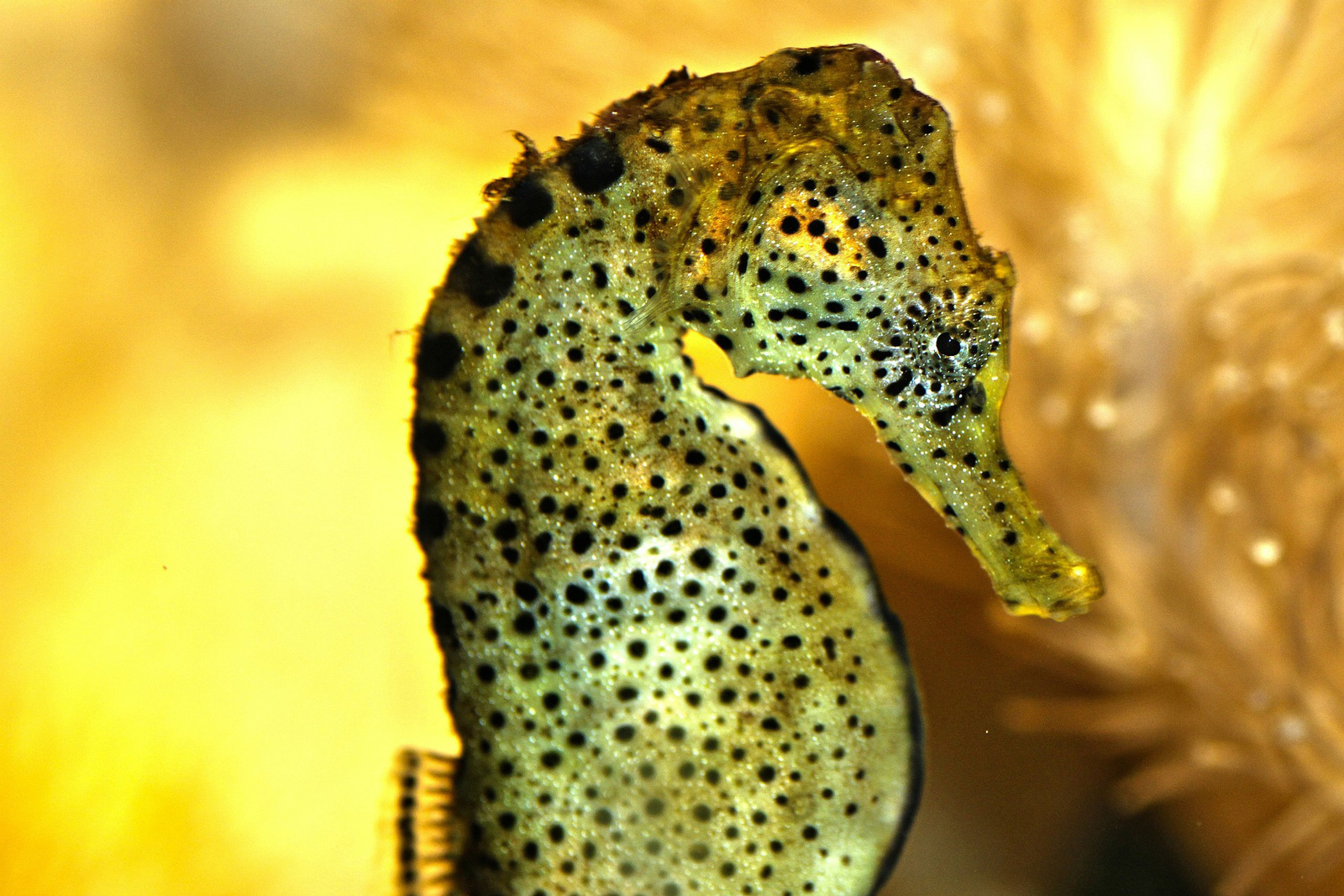
“You break free when you feel neither beneath anyone nor superior to anyone,
when you shed the need to control other people,
when you create space for others to be who they are and for your real self to be what it is.”
Your enthusiasm for experience is a lot like the way the seahorse moves through life. To explain, seahorses kind of drift along. They soak up the scenery on the currents of the sea. Most of you are pretty content to do the same. You’re highly adaptable. Wherever life’s current takes you – I’m certain you can adapt and thrive. That’s not to say you don’t appreciate roots. You do. Once you find a place that feels magical and just right – you do as the seahorse does – you hook in with your strong tail and anchor down. Nonetheless, it should surprise no one that you may not stay wrapped up in one place for long. Eventually, the sea surges again, and you allow yourself to be swept away on a new current.
Another interesting aspect about your sign is the gift of camouflage. Seahorses can blend in almost any environment. So can you. But don’t mistake the purpose of blending in. You don’t do it to hide yourself. No way. You gilly-suit up because you need to take in your surroundings. Being camouflaged allows you to be in the middle of the action as an observer. Eventually you’ll pop out of the seaweed and make your presence known. This likely happens when you’ve taken in all the information you need from your environment.
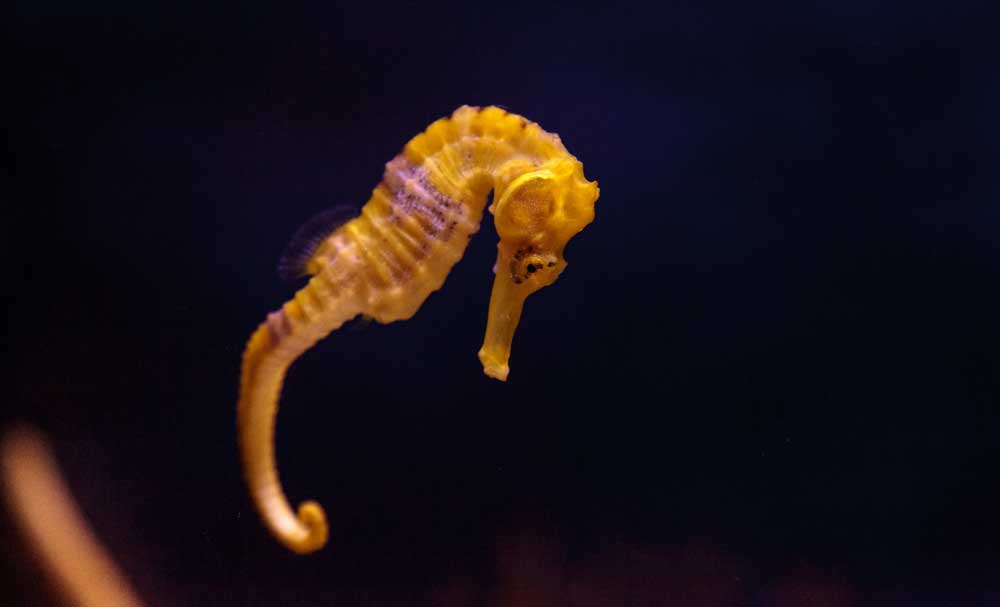
When you do cast off your mask, it’s a delightful surprise. People are genuinely impressed with your charm, charisma and the extent of your knowledge. Most of you sassy seahorses have a biting wit, with an occasional barb of sarcasm mixed in. You are a natural communicator, and rarely have a problem conversing with anybody in any station. Furthermore, you tend to sincerely like people. Exchanging ideas and stories with other people can be truly invigorating for you. You consider communication to be an art form, and you paint your social landscape brilliantly.
Speaking of art, most of you are extremely creative. Bright ideas are like potato chips for you…you never stop at just one. Drama, writing, music, visual media…you pretty much have a Midas touch in any creative outlet. That’s a good thing, because you probably aren’t content with just one avenue of expression. Nope – most of you seahorses like to dabble in many venues. This isn’t limited to art. You may embark on multiple careers before you retire. You could start out as a nurse, and wind up an circus acrobat. Same goes with romantic partners. There’s often not a lot of rhyme or reason to whom you gravitate. Although, one constant is this: Whether partner, vocation or whatever – you’ve got to be enchanted. As the adage goes, ‘you ain’t got a thing if you don’t feel that zing!’. Err, well, something like that – you get what I mean.
Keywords for Celtic Zodiac Sign of the Seahorse
- Witty
- Diverse
- Restless
- Curious
- Creative
- Versatile
- Charming
- Intelligent
- Energetic
- Intelligent
- Adaptable
- Energetic
- Expressive
- Persuasive
- Perceptive
- Resourceful
- Independent
- Communicative
- Unconventional
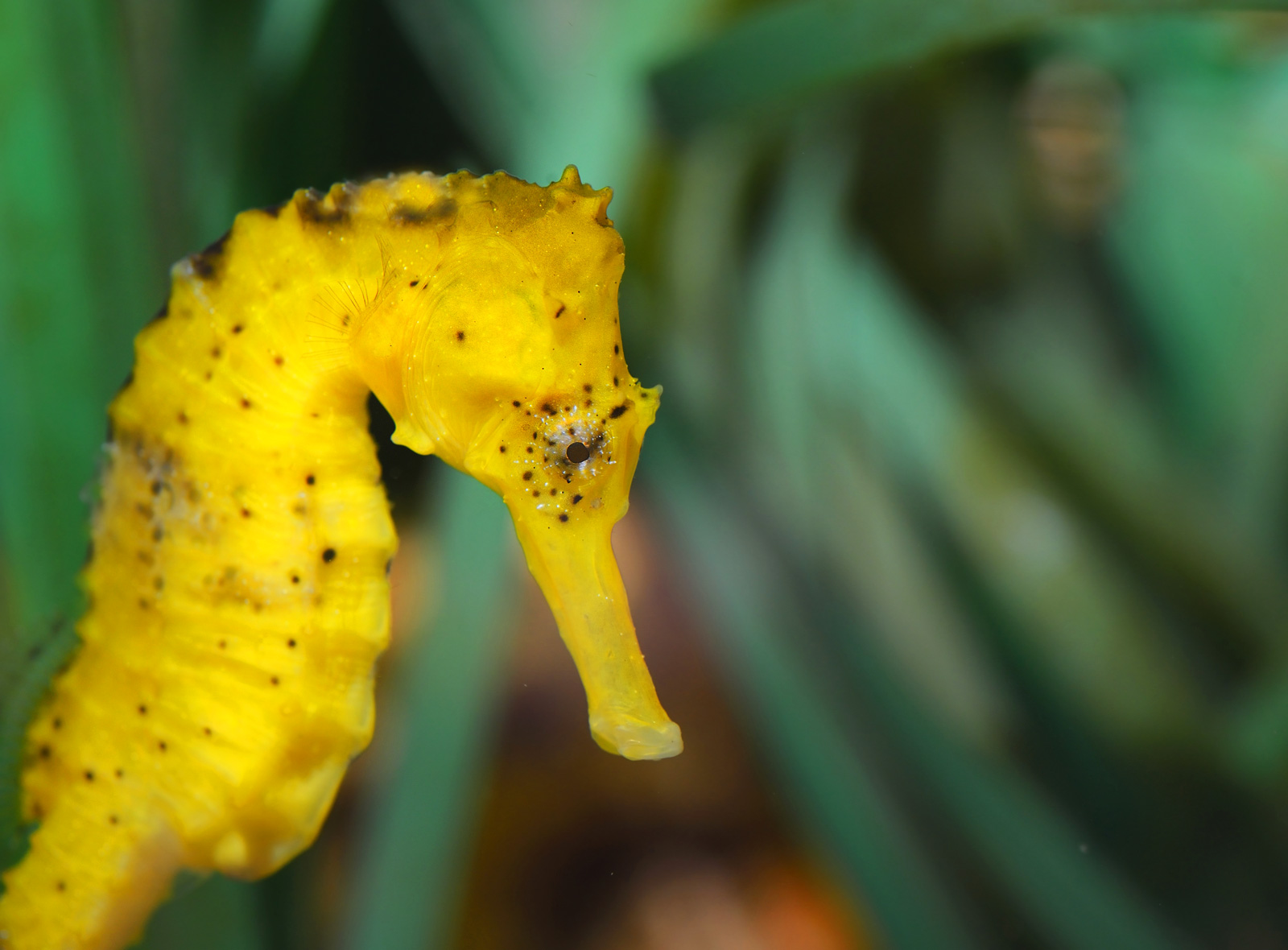
Whoa! What a list! Every adjective is true of you, dear seahorse. I’d like to touch on that word, “unconventional.” Part of your unconventionality comes from your polar tendencies. You can be a social butterfly, but also a hermit. You can fight for a cause, but you’ve been known to be a pacifist. You can be a fashion maven, yet loathe such superficial showiness. All this makes you rather unpredictable. It also means you move through life to the beat of your own, unique drum. It’s important you follow the rhythm of your own music. Take your Celtic zodiac sign as an example. Did you know the males have the babies in the seahorse family? Yep. Females insert the eggs into the males, who carry them to term. Males also raise the babies until their ready to go solo. If that ain’t a gender-bender, I don’t know what is. I’m not implying you’re gender bending. What I’m saying is, orthodoxy often isn’t your bag, baby. That’s okay. When it comes to you, I like this saying: “Not all those who wander are lost.” Go a’wandering, dear one. Be different. Be unique. Not for the sake of being different…but for the sake of honoring yourself. Be who you are, that’s where you’re true brilliance is.
Noteworthy Aspects for Your Celtic Zodiac Sign
Element: Air
Those of you born under the Celtic animal sign of the seahorse are ruled by the air element. What does that mean? It means everything I’ve been saying about your sharp communication skills is underscored by your element. Air is symbolic of exchanging data. Often, this exchange comes in more forms than just chatting for hours on the phone with your BFF. Because you are keenly aware of your environment, you’re likely able to pick up on intuitive hits. Ideas or impressions seem to drop in your lap out of thin air. That’s your perception at work, and that’s the gift the element of air has for you.
Those of you born under the Celtic animal sign of the seahorse are ruled by the air element. What does that mean? It means everything I’ve been saying about your sharp communication skills is underscored by your element. Air is symbolic of exchanging data. Often, this exchange comes in more forms than just chatting for hours on the phone with your BFF. Because you are keenly aware of your environment, you’re likely able to pick up on intuitive hits. Ideas or impressions seem to drop in your lap out of thin air. That’s your perception at work, and that’s the gift the element of air has for you.
Planet: Mercury
The seahorse is governed by the planet Mercury. The symbolic theme of Mercury deals with intelligence, communication and understanding. Mercury is also in charge of speedy transference of information. You get your quick wit from this planetary influence. This planet also helps you strike up meaningful conversations with total strangers. Mercury is also a factor in travel and adventure. Consider those pretty wings on the god’s sandals (or sometimes helmet). Ever ready to take flight to new locales, you can really jive with Mercury’s traveling vibe.
The seahorse is governed by the planet Mercury. The symbolic theme of Mercury deals with intelligence, communication and understanding. Mercury is also in charge of speedy transference of information. You get your quick wit from this planetary influence. This planet also helps you strike up meaningful conversations with total strangers. Mercury is also a factor in travel and adventure. Consider those pretty wings on the god’s sandals (or sometimes helmet). Ever ready to take flight to new locales, you can really jive with Mercury’s traveling vibe.
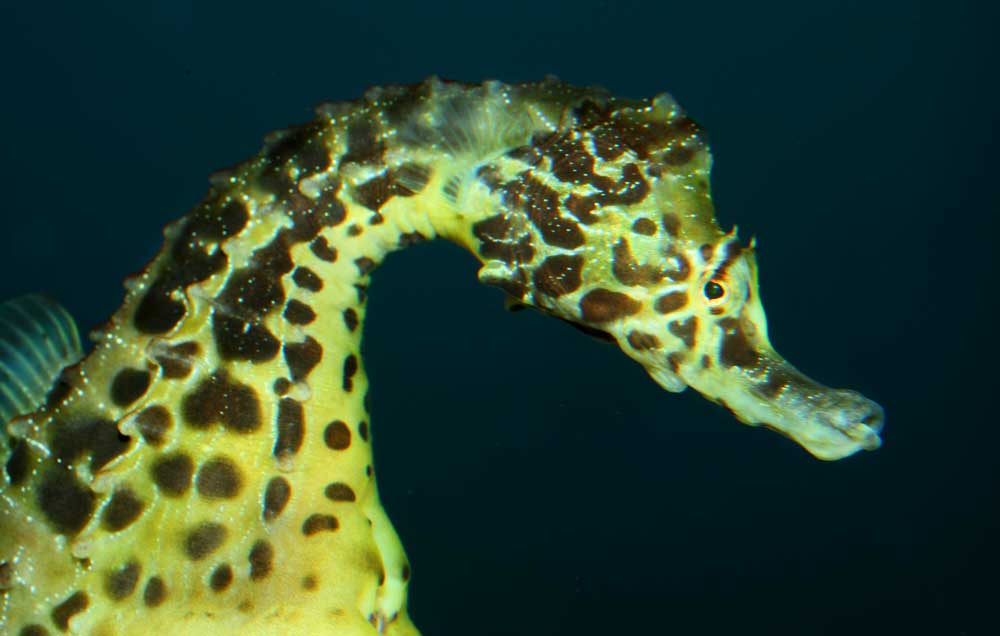
The Legend of Your Celtic Animal Sign
In Celtic myth and lore, the seahorse is a thing of magical enchantment. There are variances depending upon which source you consult, but quite often the seahorse tends to be a shape-shifter. Sometimes a beguiling, breathtaking beauty. Sometimes a brooding sea monster. It seems the seahorse was such a mystery to the Celts, that it simply must be able to change into many forms. It’s pretty much the same with you. You have such capacity for strength, wisdom and expression – one form simply can’t contain you. You may feel like a gypsy one day, and member of aristocracy the next – that’s ok. In fact, it’s not uncommon.
The Celts tell tales of the seahorse being both ominous and beneficent. You can relate to that too. Sometimes the seahorse was said to eat sailors alive. In other legends, the seahorse aided seafarers to safe harbor. Sound familiar? You possess both sides of a lovely coin. You can use your power to guide and uplift. Or, you can use your power to Hulk-smash the most secure foundations. This is neither good nor bad. It simply is. You control your own magic wand. You can point and say: “Boo!” Or you can point and go: “Shazzaaam!” One action can be scary, the other can be empowering. That’s what I’ve been trying to relate to you, dear seahorse. There’s really no telling what you’re capable of. I think that’s very switched on. It means you’re never limited. You don’t have to conform or comply. You’re too smart for that anyway. 

Closing Thoughts on Your Celtic Zodiac Sign
For those of you born between May 13 – June 9, I have only this to say: Thank goodness for you! You bring a rich perspective to the zodiac. Without your flair, color and style – we’d all go mad with boredom.
I hope you have enjoyed these insights into the fox Celtic zodiac sign. If you liked this article, don’t miss the whole list of Celtic Animal Signs here. You might also like to read more about Symbolic Seahorse Meanings here.
As always, thanks for reading.
Seahorse salutations to you,
Avia
Learn more about the power of the seahorse here: Symbolic Seahorse Meanings .
the stone given in celebration of the 4th and 19th anniversaries of marriage. Topaz is a symbol of love and affection, and has been said to be an aid to ones sweetness and disposition.
Topaz gets its name from the Greek word topazion, which may originate from the Sanskrit tapas, meaning, “fire.” The name might also come from the name of the Egyptian island of topazos (now St Johns island) in the Red Sea. The Latin writer Pliny the Elder used the island’s name for a yellowish green stone found there, and it soon became the name for most yellow stones. Topaz was once predominantly found there but is now also found in Brazil, Nigeria, Australia, Burma, and Mexico.
The Greeks and Romans greatly valued topaz as a gemstone. In medieval times, small wine-yellow Saxonian topaz was mined at Schneckenstein in the Erzgebirge Mountains in Saxony Germany, and several rulers wore these specimens in jewelry. Deep mining was later used at the site from 1737 to 1800. Topaz was always a prized and rare stone from the time of the middle Ages until discoveries of large deposits in Brazil in the mid 19th century. Nowadays it is much more popular and very affordable.
In 1740, the “Braganza”  diamond (1,640 carats) was found in Ouro Preto, Brazil. It was set in the Portugese crown, and was thought to be the largest diamond ever found. The fact that it was a diamond was never confirmed, and it is now believed to have been a colorless topaz.
diamond (1,640 carats) was found in Ouro Preto, Brazil. It was set in the Portugese crown, and was thought to be the largest diamond ever found. The fact that it was a diamond was never confirmed, and it is now believed to have been a colorless topaz.
 diamond (1,640 carats) was found in Ouro Preto, Brazil. It was set in the Portugese crown, and was thought to be the largest diamond ever found. The fact that it was a diamond was never confirmed, and it is now believed to have been a colorless topaz.
diamond (1,640 carats) was found in Ouro Preto, Brazil. It was set in the Portugese crown, and was thought to be the largest diamond ever found. The fact that it was a diamond was never confirmed, and it is now believed to have been a colorless topaz.
Topaz was one of the stones selected by Aaron for his priestly breastplate. He placed it on there as the second stone in the first row of stones. Topaz is also found as one of the stones in Revelation and is one of the stones of the apocalypse. In Egyptian practices, it is the symbol of Ra, the Sun god, who was the giver of life. In Europe, topaz became strongly linked with Apollo, who is also a solar being.
The majority of topaz is colorless and is called topaz. The next most abundant color of topaz is blue and green. The most frequently seen stones in jewelry are the shades yellow or sherry brown, and pink. Clear, pink, blue and honey-yellow varieties of topaz are especially valued. The most sought after and expensive colors are called “imperial topaz.” In the past, it was thought that all yellow gems were topaz and that all topaz was yellow. We now know topaz varies in color from pale blue and colorless, to yellow, orange, brown and pink. The pink stones so popular in Victorian jewelry were produced by heat-treating golden-brown topaz from Brazil.
In Hindu mythology, the word for topaz means heat. Topaz is one of the sacred stones of the Hindu’s Kalpa tree. It is well known and very sacred to the Hindus. It is one of the 9 sacred stones upon a talisman of nine gems. The Hindus believe that worn as a pendant, this gemstone will relieve thirst, sharpen intelligence and lengthen ones life.
In Africa, healing rituals with topaz are practiced to establish communion with the realm of the spirit. The Bushmen who bring it to their shamanic work both for journeying, working with ancestors, and for healing, treat the stone as a highly sacred one.
Topaz was once was considered one of five elemental substances that would bring protection to the deities. The figure of a falcon engraved upon a topaz would bring the wearer goodwill and kindness of the powers that be. It was also thought that this would help one attract wealthy patrons who would support artistic endeavors.
Topaz in particular has been said to work with ones creative energies. topaz is also excellent for promoting concentration. Many believed wearing a topaz ring would keep death from coming prematurely and would control insomnia and greed. topaz has also been long believed to be useful for those unable to control lust- a good stone for people with sex addictions.

Topaz has been said to be of great use for protection against a wide variety of problems from emotional difficulties to fires and accidents. In 1255, St Hildegard of Bingen, the famous mystic, offered a simple remedy for failing eyesight: steep a topaz in wine for three days and then lightly rub it over the eyes. Worn around the neck, topaz was also thought to cure madness.
Topaz is used to promote good fortune. In fact, it has been said that dreaming of topaz may indicate that good fortune is on its way. These dreams can also suggest love affairs.
Traditions hold that topaz bestowed many benefits upon its wearer. It would dispel cowardice, calm the temper, cure madness and plague, and sharpen the wit. It was also thought to aid in sleep and eliminate nightmares, as well as cure rheumatism and soreness in the joints. The stone has also been credited with being effective against bleeding and heart disease. It has been said to instantly lose its color to indicate that poison is present, thus protecting its owner. The stone has also been thought to bring fidelity and friendship if constantly worn without being set aside. It was also believed to be an effective talisman against accident and fire, and to bring increased intuition and long life. To Christians, it has been known as a symbol of uprightness and virtue.
Topaz has been said to be an ideal stone for travelers, protecting them from homesickness and danger. Ancient Romans credited topaz with preventing sickness of the chest and abdominal pain. Set in gold and worn around the neck, topaz is reputed to dispel bad omens, heal poor vision and calm anger.
Topaz is particularly good for artists. It gives one access to their artistic creativity, and increases one’s appreciation of beauty. It is said to give a person the capacity to see both the larger picture and the minute detail, recognizing how they interrelate.
Emotionally, topaz is very useful for treating depression. It helps a person alleviate their fears, and treats psychosomatic illnesses. It balances emotions, helping those who go from one extreme to another. topaz is highly recommended for healing a person who is suffering from shock or trauma. It is also an excellent stone for those whose lives contain abnormal amounts of stress or tension. topaz can stimulate a person to maintain a brighter outlook on life.
All in all, topaz has been said to relieve greed, frenzies, insanity, hypocrisy, envy, intrigue, disease, injury, sudden death, sorcery, negative magic, lunacy and all disturbing emotions. It is said to soothe, heal, re-motivate, and bring the wearer strength, loyalty, beauty, protection, healing, weight loss, joy, generosity, abundance, wisdom, enlightenment, knowledge, good health, virtues of leadership, and love.
Topaz is known as the “lover of gold,” as it is used to bring wealth and money. It is traditionally known as a stone of love and good fortune, bringing successful attainment of goals. It is said to be especially effective when set in gold and bound to the left arm. topaz brings confidence, aids in problem solving, openness, honesty, self-control, self-realization and the development of inner wisdom.
~emma ruth allaire zerna concepcion charles reeves

Celtic Lore of the Honey Bee
Updated on February 19, 2018

It’s been said that the Celts, being a tough race that fits in well with the northern latitudes, came to Britain specifically for the black bee and its honey. Even the Welsh bards of old called Britain the “Isle of Honey” due to the sheer number of wild bees flying to and fro.
It’s no wonder then that the Celtic peoples, both ancient and modern, have built up a vast lore around this marvelous insect, giving us an indication as to just how much it was, and still is, honored throughout the Celtic nations.
In Celtic myth, bees were regarded as having great wisdom and acted as messengers between worlds, able to travel to the Otherworld, bringing back messages from the gods. In the western isles of Scotland, bees were thought to embody the ancient knowledge of the druids. This led to the Scottish lore of the secret knowledge of the bees, along with the Scots saying “ask the wild bee for what the druid knew.” Highlanders believed that during sleep or while in a trance, a person’s soul left the body in the form of a bee.
This wisdom translated through into the Christian era, with folk tales in Scotland and England stating that bees would hum loudly at midnight on Christmas Day for the Savior’s birth. Bees in Cornwall could only be moved on Good Friday. The lore on being able to travel through realms was changed into bees coming directly from Paradise.
It is necessary to treat the bees as members of the family. They should be informed of all family happenings, from births to deaths and events inbetween, especially weddings. Beekeepers also needed calm voices, as the bees did not take harsh words lightly. Either offense could result in the hives not producing honey all the way to leaving their beekeeper. Their leaving was considered very dangerous, as owners who lost their bees were surely doomed to die!

The lore of bees and death is especially spoken of. In Wales, if there was a death in the family, it was important that someone in the family told the bees before the funeral, as well as tying a black ribbon to a piece of wood and putting it in the hole at the top of the hive. This would protect against further deaths in the family. In Cornwall, a family member would relate the death to the bees with “Brownie, brownie, brownie, your master is dead,” and in Buckinghamshire with the slightly smaller “Little brownies, your master is dead.” The bees would then hum if they chose to stay with the family. Irish folk tales tell that the hives were to be decorated with black cloth and were to be given their share of the funeral food.
It was considered an ill omen if a swarm settled on a dead branch, indicating death for that beekeeper’s family or the swarm witness. In Wales, if a swarm entered a house, it was unlucky and foretold death. Other Welsh folklore contradicts this, though, as it’s also been told that a swarm entering a house or garden is good luck, then bad luck if it later leaves. Combine it with the tales of owners dying when their bees leave and you really want them to stay! In Cornwall, if you are able to throw your handkerchief over a swarm, you would claim the swarm and the good luck that went along with it.

When obtaining a hive, one should never pay for a swarm, as that hive would then not produce. Rather, you would pay the original owner back with honey and comb. Nor would a stolen hive give any honey, with Welsh legends speaking of stolen hives dying.
The products of the bee, honey and mead, were used for magic and medicine. The Scots used a potion consisting of equal parts heather honey, cream, and whisky to cure wasting diseases. The ancient custom of feeding milk and honey to infants comes from giving them hazel milk mixed with honey. Finn mac Cumhaill, Irish hero extraordinaire, was given a goblet of mead to befuddle his senses in order to be tricked into marriage. You can appease the Shining Ones at Beltaine by making honey cakes to leave outside in the garden, with the recipe calling for both honey and white wine, although using mead is also acceptable, of course.
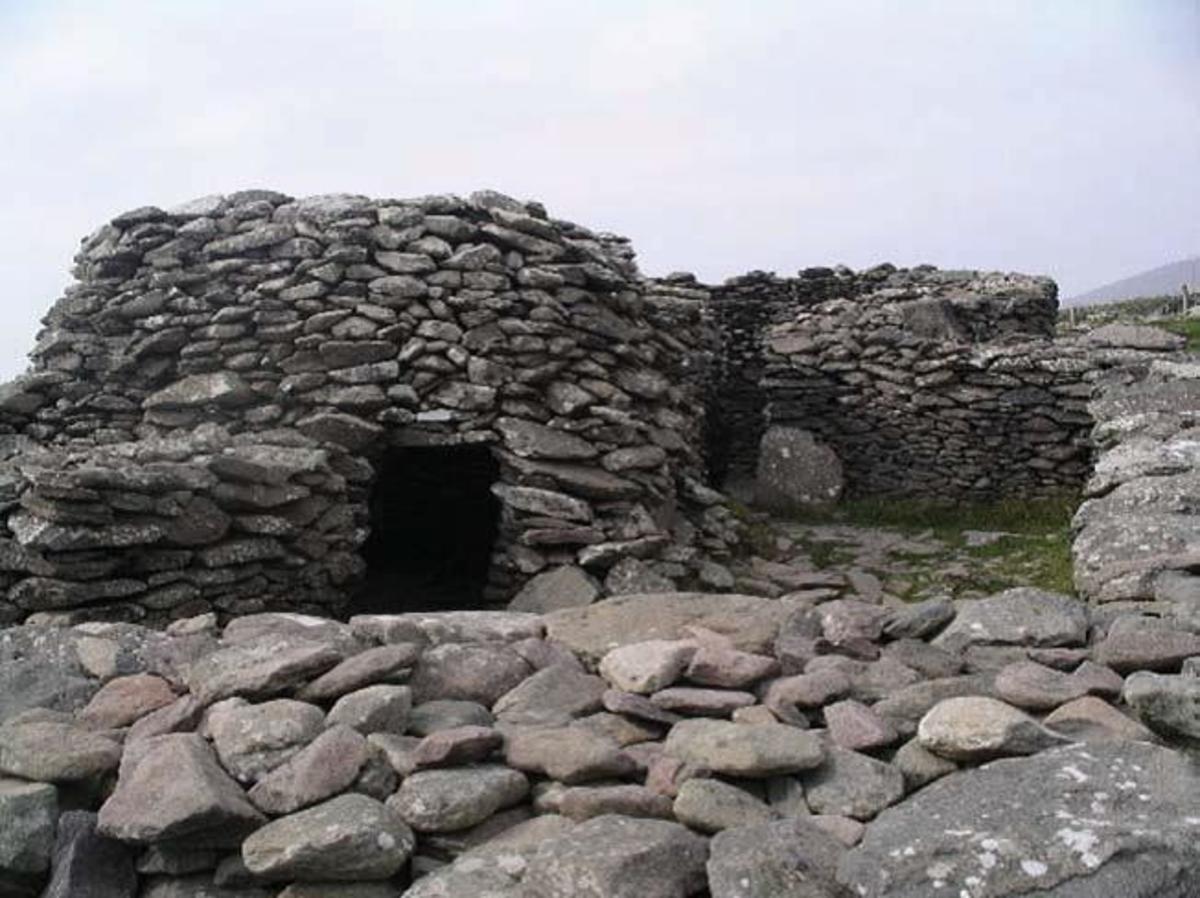
The Irish goddess Brigid held bees to be sacred, with her hives bringing their magical nectar from her Otherworld apple orchard. Even the rivers that led into the Otherworld were of mead. St. Gobnait, who is said may be a Christianized version of Brigid, protected her people with bees, using them to stop cattle thieves and using the honey as a healing aid against the plague. Henwen, the mythical sow of Dadweir Dallpenn, left three bees and three grains of wheat in Gwent, which has since produced the best honey and wheat to be found.
The Bech Bretha are early Irish laws made to protect bees and handle their interactions with people. Don’t steal a hive, for that is a capital offense. If you were stung but did not retaliate, you received a meal of honey from the beekeeper. If you died from the sting, your family would receive two hives! In Wales, Hwyel the Good wrote laws concerning the production of mead and the role of mead maker.
All this is just the top of the honeycomb. Delving in even deeper to Celtic bee lore may make you sticky as you work your way through the comb, but it is worth the very sweet time.

Further reading:
Notes on the Folk-lore of the North-east of Scotland, by Walter Gregor
Welsh Folk-Lore - a Collection of the Folk-Tales and Legends of North Wales, by Elias Owen Denbighshire
Celtic Folklore Cooking, by Joanne Asala
The Lore of the Honey Bee, by Tickner Edwardes
The Sacred Bee in Ancient Times and Folklore, by Hilda M. Ransome
A Brief Guide to Celtic Myths and Legends, by Martyn Whittock



No comments:
Post a Comment